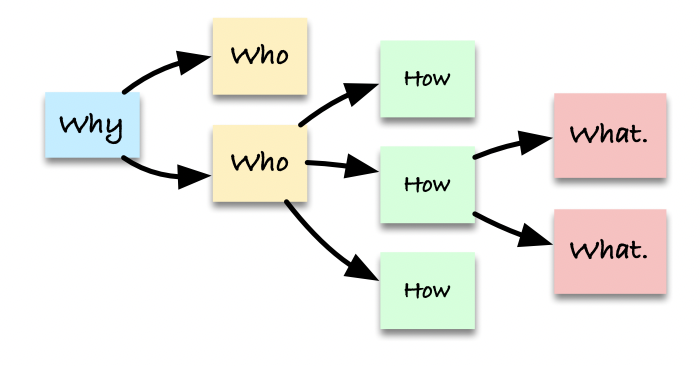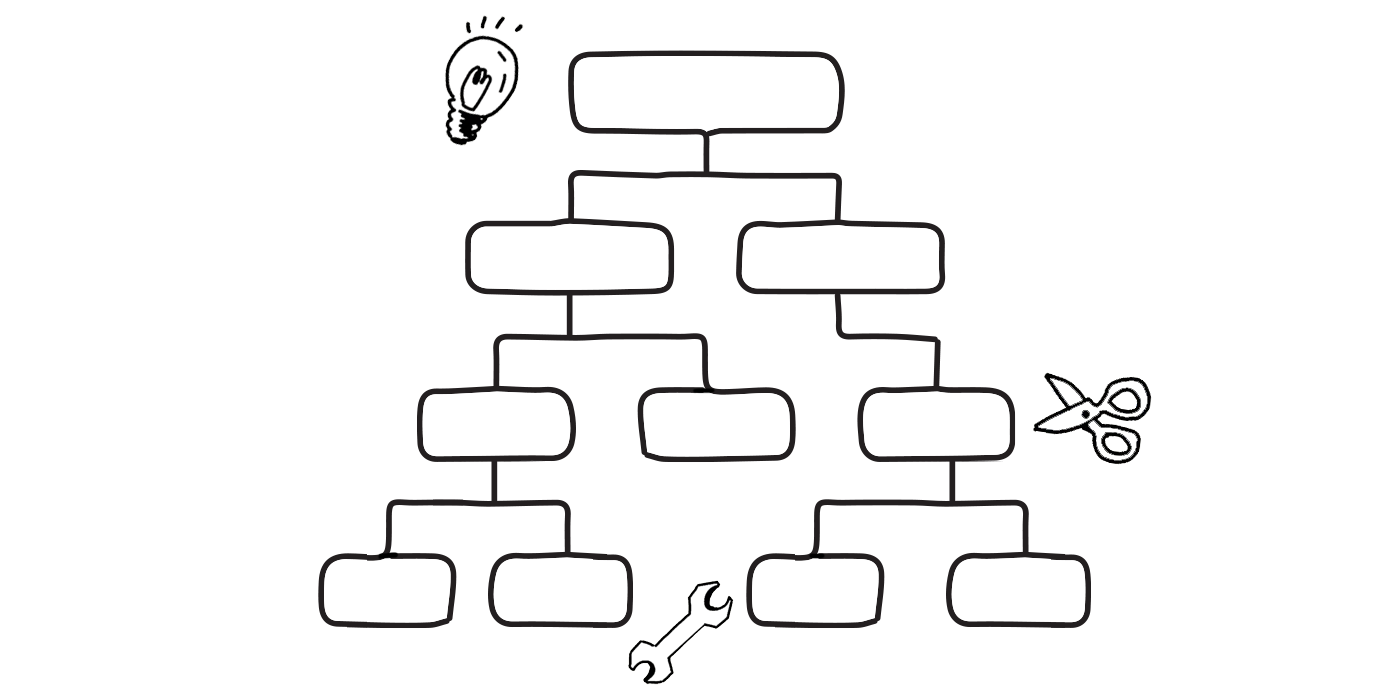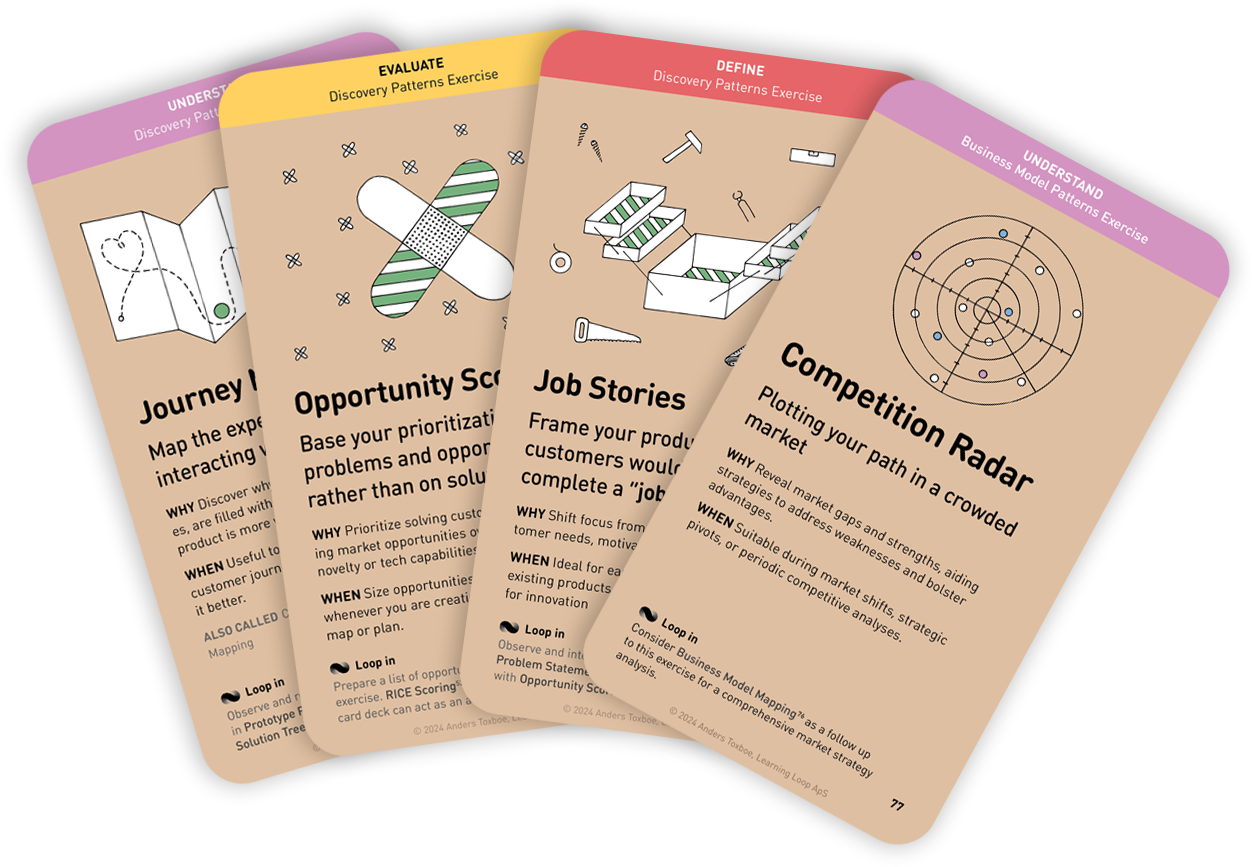Run time
90-180 minutes
Group size
4-12
Why: Avoid wasteful features and focus on high-value activities through a goal-centric and user-driven approach
When: Conduct while building or restructuring your backlog
This workshop exercise is part of the Workshop Patterns printed card deck.
A collection of workshop exercises that will help you ditch dull meetings and facilitate with confidence. It will help you master the design process and have more productive time with your team. The card deck will be ready for purchase in the end of 2023 and is now undergoing rigorous testing.
Reserve your deck!Instructions for running this play

- Setup. Label four sections on a large surface: WHY, WHO, HOW, WHAT
- Answer the questions. Starting from WHY and proceeding to WHAT, conduct a 3 minute Silent Storming exercise, answering the questions corresponding to each area on sticky notes. When all questions have been answered, let each participant Playback sticky notes in the corresponding section on the large surface.
- WHY: Define the goal of the system. What value should it bring?
- WHO: Identify the main actors who will use, benefit from, or be affected by the system.
- HOW: Outline how the main actors will use the system to impact the goal
- WHAT: List the deliverables (features and activities) that will support these impacts.
- Connect. Draw lines between sticky notes across the four sections to illustrate relationships and dependencies.
- Review. Ensure all participants understand the outcomes. The results can be further explored using tools like User Story Mapping.
Instructions for running this play
- Setup. Label four sections on a large surface in reverse order: HOW, WHO, WHY, WHAT
- Introduce the exercise and its purpose: To start with the desired impacts and work backward to determine the necessary deliverables and actions to achieve them, promoting a more outcome-driven approach.
- Silent Storming. Starting from HOW and moving backwards to WHAT, conduct a 3 minute Silent Storming exercise for each section. Participants should answer the questions corresponding to each area on sticky notes.
- HOW: Outline how the general impact of the system will be.
- WHO: Identify the main actors who will be impacted by the system and ultimately use, benefit from it.
- WHY: Define the goal of the system based on its potential impact. What value will the impact bring?
- WHAT: List the deliverables (features and activities) that will support these impacts and goals.
- Playback Results. After all questions have been answered, let each participant present their sticky notes in the corresponding section on the large surface.
- Connect. Draw lines between sticky notes across the four sections to illustrate relationships and dependencies, working from WHY to WHAT. This will create a visual roadmap of how to achieve the desired impacts.
- Review. Facilitate a group discussion to make sure all participants understand the outcomes and the roadmap. This is a good time to clarify any confusion and discuss any concerns.
- Follow-ups. Use tools like User Story Mapping to further explore the results. This will allow participants to delve deeper into the user journey and understand the full impact of each deliverable.
- Wrap-up and Next Steps. Conclude the workshop by summarizing the main insights and reviewing the roadmap. Discuss the next steps, such as prioritizing deliverables or testing the roadmap in a real-world scenario. This is also a good time to answer any remaining questions and thank the participants for their time and input.
Tips to perfect this play
Master and adapt the play to fit your context and needs.
Tip
Move between the sections as needed to ensure holistic thinking

